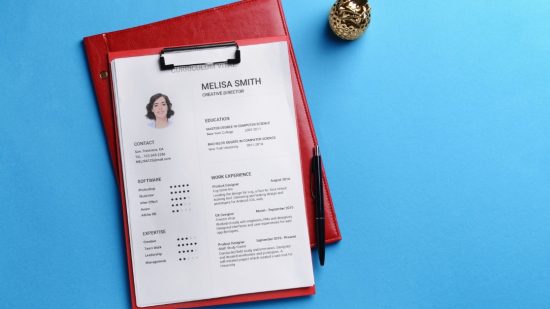Welcome to our blog post on how to write a CV! Whether you’re a seasoned professional or just starting out in your career, crafting an impressive CV is essential for landing that dream job. Your CV is not just a document; it’s your personal marketing tool that showcases your skills, experiences, and qualifications. In this article, we will guide you through the process of creating an attention-grabbing CV that will make employers take notice. So, let’s dive in and master the art of writing a winning CV!
What is a CV?

A CV, short for Curriculum Vitae, is a document that provides a comprehensive overview of an individual’s professional and educational background. It serves as a tool to showcase one’s skills, experiences, achievements, and qualifications to potential employers or academic institutions.
A CV typically includes personal information, a professional summary, work experience, education, skills, achievements, and references. It is a crucial component of the job application process, as it allows employers to assess an individual’s suitability for a particular role.
A well-crafted CV presents a clear and concise picture of a person’s capabilities and accomplishments, aiming to make a positive impression and stand out among other candidates.
The Purpose of a CV
The purpose of a CV, or Curriculum Vitae, is to present a comprehensive and detailed overview of an individual’s professional and educational background to potential employers or academic institutions. It serves as a means for job seekers to showcase their skills, experiences, achievements, and qualifications in a structured format.
The main goal of a CV is to demonstrate to the reader that the candidate possesses the necessary knowledge, expertise, and abilities required for a specific job or educational opportunity. By highlighting relevant accomplishments and providing a clear picture of one’s career trajectory, a well-crafted CV helps capture the attention of employers, recruiters, or admissions committees and increases the likelihood of being invited for an interview or further consideration.
Ultimately, the purpose of a CV is to position oneself as a strong and competitive candidate in a highly competitive job market or academic setting.
Difference Between CV and Resume

The terms CV (Curriculum Vitae) and resume are often used interchangeably, but they have distinctions:
- Length: A CV is comprehensive and longer, often multiple pages, detailing the academic and professional history. A resume is concise, typically one or two pages, focusing on recent and relevant experiences.
- Purpose and Audience: CVs are common in academia, catering to specialized audiences like universities. Resumes are widely used in business sectors, tailoring content for specific job opportunities.
- Content: CVs delve into extensive details like research projects and publications suitable for academic and research fields. Resumes emphasize skills, responsibilities, and achievements relevant to specific jobs.
- Flexibility: Resumes are flexible and customized for each application. CVs remain static, generally unchanged for different academic or research roles.
Consider regional and industry-specific variations when deciding on the appropriate format for your application.
How to Write a CV?
Writing a CV (Curriculum Vitae) can be a crucial step in securing a job opportunity. Here is a detailed guide on how to write an effective CV:
- Personal Information: Start with your full name, contact details (phone number, email address), and, optionally, your address.
- Professional Summary: Write a concise paragraph that summarizes your skills, experiences, and career goals. Tailor this section to match the requirements of the position you’re applying for.
- Work Experience: Include your work history, starting with your most recent job. List the company name, job title, and dates of employment, and briefly describe your responsibilities and achievements in each role. Use action verbs and quantify your accomplishments where possible.
- Education: Mention your educational background, including the degree(s) you obtained, the institution(s) attended, and the dates of completion. Include any relevant certifications or additional training.
- Skills: Highlight your key skills related to the job, both technical and soft skills. You can categorize them if necessary and provide examples or evidence of how you’ve used these skills in previous roles.
- Achievements: Showcase any notable achievements or awards you have received throughout your career or education. These could include commendations, publications, presentations, or successful projects.
- Personal Projects or Volunteering: If applicable, detail personal projects, freelancing work, or volunteering experience that demonstrates your skills and dedication.
- References: It is generally optional to include references directly on your CV, but you can state “References available upon request” if you prefer. Make sure to inform your references beforehand and have their contact details ready.
- Format and Layout: Maintain a clean and professional appearance for your CV. Use a readable font, bullet points for clarity, and proper spacing. Keep it concise and limit it to a maximum of two pages.
- Proofread and Edit: Thoroughly review your CV for any grammar or spelling errors. Consider seeking feedback from a trusted friend or mentor to ensure clarity and coherence.
Remember, adapt your CV to each job application by highlighting the most relevant experiences and skills. Customize it to match the employer’s requirements, and always keep it updated as you gain new experiences.
How Long Should a CV be?

The length of a CV, or Curriculum Vitae, can vary depending on factors such as the individual’s level of experience, industry norms, and the specific requirements of the job application. In general, it is recommended to keep a CV concise and focused, limiting it to a maximum of two pages.
However, there are exceptions where individuals with extensive academic or research backgrounds may have longer CVs that include detailed publications, presentations, and projects. It’s important to strike a balance between providing enough relevant information to support your candidacy and being mindful of the reader’s time.
Remember to prioritize the most significant and recent experiences and accomplishments while ensuring clarity and readability throughout the document.
Dos and Don’ts When Writing a CV

When writing a CV, it’s important to keep in mind some dos and don’ts to ensure your document stands out and effectively represents your qualifications. Here are some key points to consider:
Dos:
- Do tailor your CV to each job application by highlighting relevant skills and experiences.
- Do use action verbs to describe your responsibilities and achievements in each role.
- Do include specific and quantifiable accomplishments to showcase your impact.
- Do proofread your CV thoroughly for any grammar or spelling errors.
- Do provide clear and concise information, using bullet points for clarity.
- Do include keywords from the job description to demonstrate your alignment with the role.
- Do include a professional summary that highlights your key qualifications and career goals.
Don’ts:
- Don’t include personal information like your date of birth, marital status, or a photograph unless specifically requested.
- Don’t use jargon or complex terminology that may confuse the reader.
- Don’t include irrelevant experiences or excessive details about insignificant roles.
- Don’t lie or exaggerate your skills, experiences, or qualifications.
- Don’t submit a generic CV without tailoring it to the specific job requirements.
- Don’t focus solely on job duties; highlight your achievements and impact instead.
- Don’t neglect to include contact information, such as phone number and email address.
By following these dos and avoiding the don’ts, you can create a compelling and effective CV that increases your chances of standing out among other applicants and securing the desired job opportunity.
Conclusion
In conclusion, writing a CV is an essential skill that can greatly impact your chances of securing a job. By following the steps outlined in this guide, you can create a well-organized and impactful CV that effectively showcases your skills and experiences to potential employers.
Remember to regularly update and tailor your CV for each job application, and always proofread for any errors or inconsistencies. With these tips in mind, you are on your way to creating a strong CV that will help you stand out in the competitive job market.
FAQs – How to Write a CV?
How do I share my CV for a job?
You can share your CV by emailing it to the hiring manager, uploading it on online application forms, submitting it on job portals, updating your LinkedIn profile, providing it to recruitment agencies, or distributing it at job fairs and networking events. Choose the method that fits the application process best and tailor your CV to match the job requirements before sharing it.
What makes a CV more attractive?
A CV can be made more attractive by ensuring clear and concise formatting, including relevant information tailored to the job, highlighting quantifiable achievements, crafting a strong personal statement, showcasing key skills, maintaining consistency and accuracy, incorporating relevant keywords, and using a professional design. Following these guidelines can enhance the overall presentation of your CV and make it more appealing to potential employers.
What should a beginner CV include?
A beginner CV should include essential information such as contact details, a brief personal statement, education background, relevant skills, any work experience (even if it’s volunteer work or part-time roles), and any additional qualifications or certifications. It’s essential to tailor the CV to the specific job or industry you’re applying for.
How does a simple CV look like?
A simple CV typically consists of sections like contact information, a concise personal statement or objective, education history, relevant skills, work experience (if any), and additional information like certifications or interests. It is usually formatted in a clean and organized manner, making it easy for recruiters to skim through important details quickly.
What is the first thing to write on a CV?
The first thing to write on a CV is your contact information, including your full name, phone number, email address, and sometimes your physical address. This helps potential employers easily reach out to you for interviews or further communication.
What makes a poor CV?
A poor CV often lacks clarity, contains spelling or grammatical errors, is overly lengthy or vague, fails to highlight relevant skills and experiences, and lacks proper formatting or organization. Including irrelevant information, using an inappropriate email address, or not customizing the CV for the job application can also contribute to a poor impression on recruiters.

